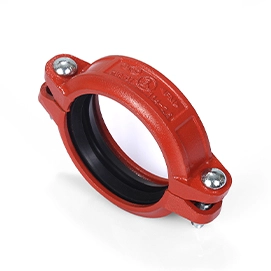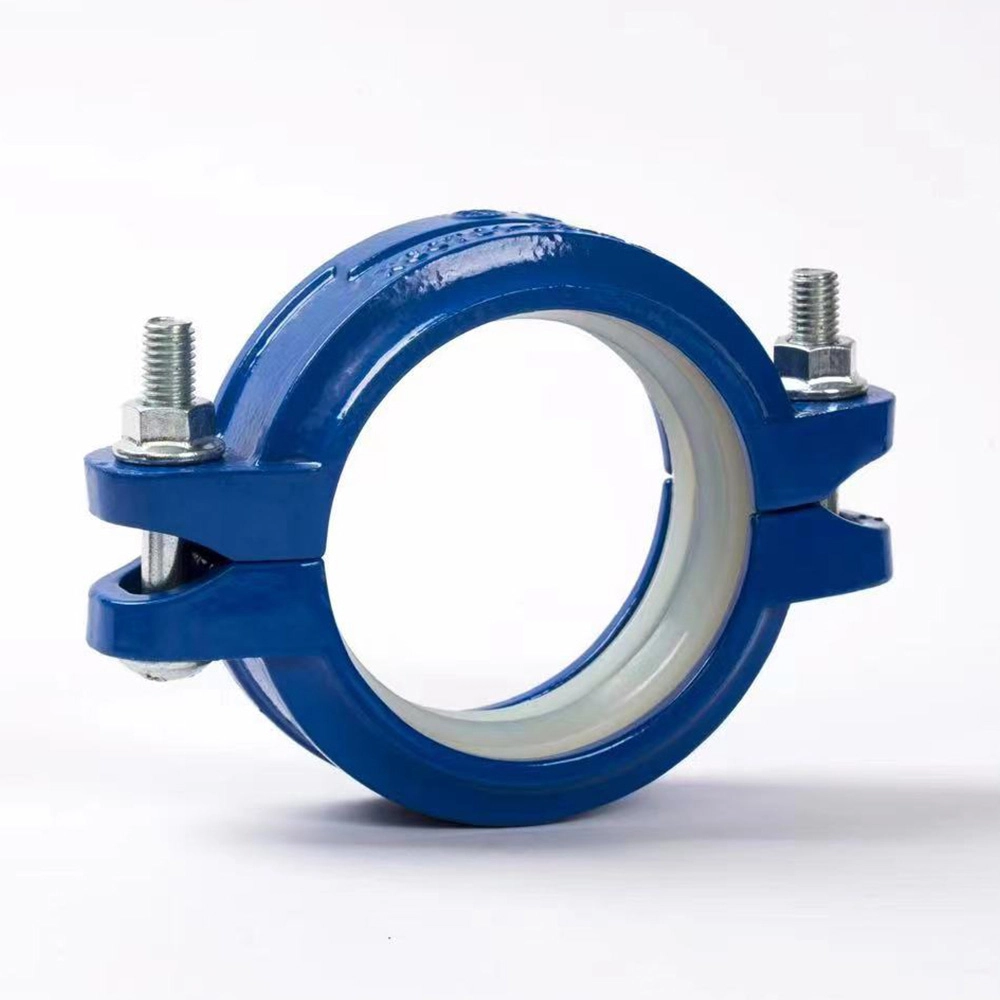
Grooved couplings are changing pipe systems with their simple use, strong build, and good performance. From factories to fire safety setups, they provide a dependable way to join pipes. This blog looks at how pipe couplings and unions differ, the perks of grooved couplings, their uses, and why VICAST is a trusted supplier for top-notch grooved connector solutions.
How Do Pipe Couplings and Unions Differ in Functionality?
Knowing what pipe couplings and unions do helps pick the right joining method for pipe systems. Each has a special job, with designs that fit specific needs.
Defining Pipe Couplings and Their Applications
A pipe connector links two pipes to make a pipeline longer or join different parts. It’s usually a fixed or semi-fixed piece, used in systems that don’t need frequent taking apart. You’ll find couplings in water lines, oil and gas pipelines, and heating or cooling systems. They keep joints tight and leak-free, handling pressure and tough conditions. Grooved couplings, a type of connector, are popular for their fast setup and flexibility.
Exploring the Purpose of Pipe Unions in Piping Systems
Pipe unions make it easy to disconnect and reconnect pipes without cutting or changing the system. They have three parts: two threaded ends and a middle nut that tightens or loosens the joint. Unions work well in systems needing regular fixes or part swaps, like in plumbing or factory setups. They offer flexibility but might not be as strong as couplings for high-pressure jobs.
Key Functional Differences Between Couplings and Unions
couplings and unions differ in how they’re built and used. couplings make a solid joint, often welded, bolted, or grooved, for long-term strength. They’re made for tough systems. Unions, on the other hand, focus on easy access for repairs or changes. couplings handle higher pressures better, while unions are less suited for extreme conditions but shine in systems needing frequent tweaks. Picking between them depends on the system’s pressure, upkeep needs, and setup goals.
| Feature | Pipe Connector | Pipe Union |
| Connection Type | Fixed or semi-fixed | Easy to take apart |
| Main Use | Lengthen pipelines, secure joints | Fixes, part swaps |
| Pressure Handling | High-pressure systems | Medium-pressure systems |
| Setup | May need welding or bolting | Threaded, no special tools needed |
Why Are Grooved Couplings Important in Modern Piping Systems?
Grooved couplings are a top choice in today’s pipe systems because of their smart design and practical benefits, making them better than older joining methods.
Features and Advantages of Grooved Couplings
Grooved couplings join pipes using a cut groove in the pipe ends, held by a housing, seal, and bolts. Their design makes them stand out. They set up quickly without welding or threading, saving time and money. They allow slight pipe movement, which handles shakes or heat expansion. Made from strong materials, they resist rust and wear, perfect for harsh places. They’re also easy to take apart for fixes or system changes. These qualities make grooved couplings, like those in VICAST’s grooved pipe fitting coupling range, a solid pick for many industries.
How Grooved Couplings Enhance System Efficiency
Grooved couplings improve how pipe systems work. Their quick setup cuts time during installation or repairs, which is key for projects with tight schedules, like office buildings. The flexible design reduces pipe stress, preventing cracks or leaks. They also work well in systems that can be added to or changed easily. By lowering upkeep needs and keeping joints leak-free, grooved couplings save time and cash while keeping systems running smoothly.
Comparing Grooved Couplings to Traditional Connection Methods
Grooved couplings outshine older methods like welding or flanged joints. Welded joints need skilled workers and take a lot of time, but grooved couplings go in fast without special skills. Flanged joints are bulky, costly, and need exact alignment, while grooved couplings are small and easier to work with. Threaded joints can leak in high-pressure systems, but grooved couplings give stronger seals. These differences show why grooved couplings are chosen for their ease and dependability in modern systems.
What Are the Common Applications of Grooved Couplings?
Grooved couplings are flexible, fitting a wide range of industries because of their strength and simple use.
Usage in Industrial Piping Systems
In factories, grooved couplings link pipes carrying water, chemicals, or gases. They’re used in oil and gas pipelines, where they handle high pressure and rusty conditions. In chemical plants, they manage harsh liquids with rust-resistant materials. Power plants use them for cooling and heating systems, relying on their secure joints. Their toughness and fast setup make them great for big industrial projects.
Role in Commercial and Residential Projects
Grooved couplings are common in plumbing, heating, cooling, and water systems for businesses and homes. They make setup easier in office buildings, keeping water and climate systems reliable with little disruption. In apartment complexes, they support plumbing that can grow with the building. Hospitals use them for safe, leak-free joints in critical systems. Their flexibility and easy upkeep fit the changing needs of these buildings.
Benefits in Fire Protection Systems
Grooved couplings are a must in fire safety setups, like sprinkler systems. They seal tightly to prevent leaks during high-pressure water surges. Their quick setup helps meet tight project deadlines. They also handle shocks from water bursts, keeping the system intact. These traits make grooved couplings vital for safety-focused systems.
Why Choose VICAST as Your Reliable Grooved Pipe Fitting Coupling Supplier?

VICAST is a leading supplier of grooved couplings, known for quality, new ideas, and customer-focused solutions.
Overview of VICAST’s Product Range and Quality Standards
VICAST focuses on making grooved pipe fittings and couplings for industries like oil, gas, water treatment, and fire safety. They use modern factories and strict quality checks. Their products meet global standards like ISO and UL certifications. Their grooved pipe fitting coupling range offers tough, rust-resistant options built for reliability in rough conditions.
Commitment to Innovation and Customer Satisfaction
VICAST stands out for its focus on new ideas and happy customers. They use the latest grooved connector designs for better performance. They tailor products to fit specific projects. Their team offers expert help and quick support through their contact page. This dedication to quality and service makes VICAST a trusted partner for pipe solutions.
Conclusion
Grooved couplings are a key part of modern pipe systems, offering strength, flexibility, and easy setup. They differ from traditional couplings and unions, providing unique benefits in efficiency and upkeep. From factories to fire safety systems, their uses are wide-ranging. VICAST’s high-quality grooved couplings ensure dependable performance, making them a great choice for industries worldwide. Picking the right joining method can save time, cut costs, and make systems last longer.
FAQs About Pipe Coupling, Union, and Grooved Couplings
What is the primary advantage of using grooved couplings over traditional methods?
Grooved couplings set up fast without welding or threading. This saves time and labor costs. Their flexible design reduces pipe stress. It prevents leaks and makes upkeep simpler. They’re more efficient than welded or flanged joints.
Can grooved couplings be used for high-pressure systems?
Yes, grooved couplings are built for high-pressure systems. They work well in industries like oil, gas, and fire safety. Their strong seals and tough materials ensure reliable performance in demanding conditions.
How do I determine whether to use a coupling or a union for my piping system?
Choose a connector for fixed, high-pressure joints, like grooved couplings for factory systems. Use a union for systems needing frequent fixes or part swaps, like in plumbing. Think about pressure, upkeep needs, and setup goals.









